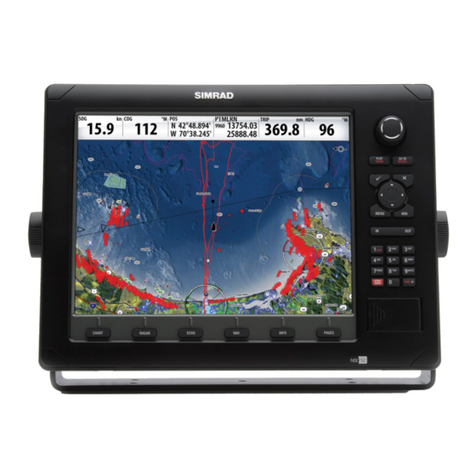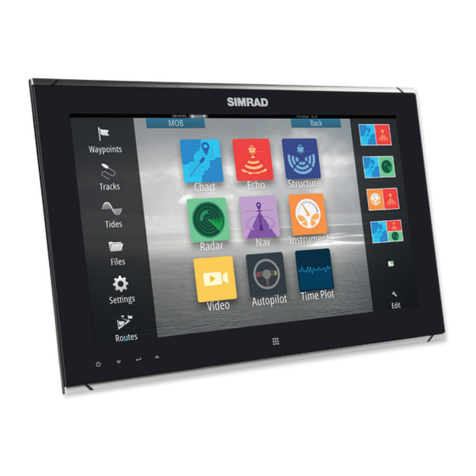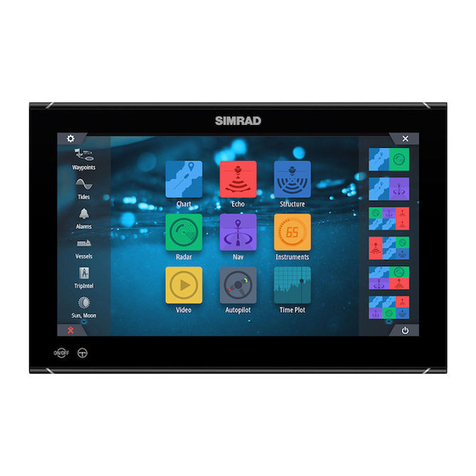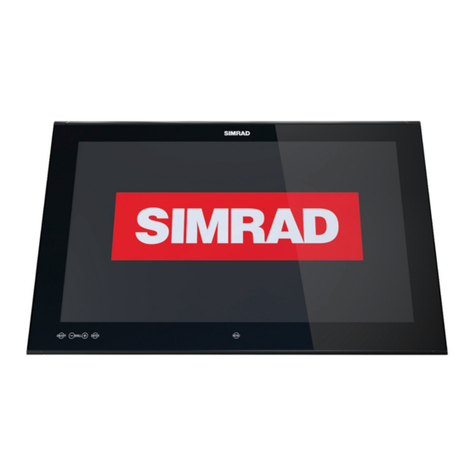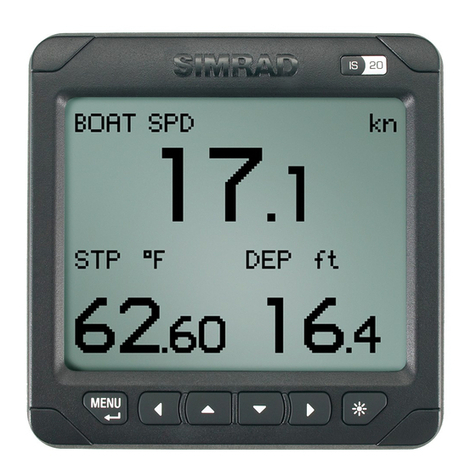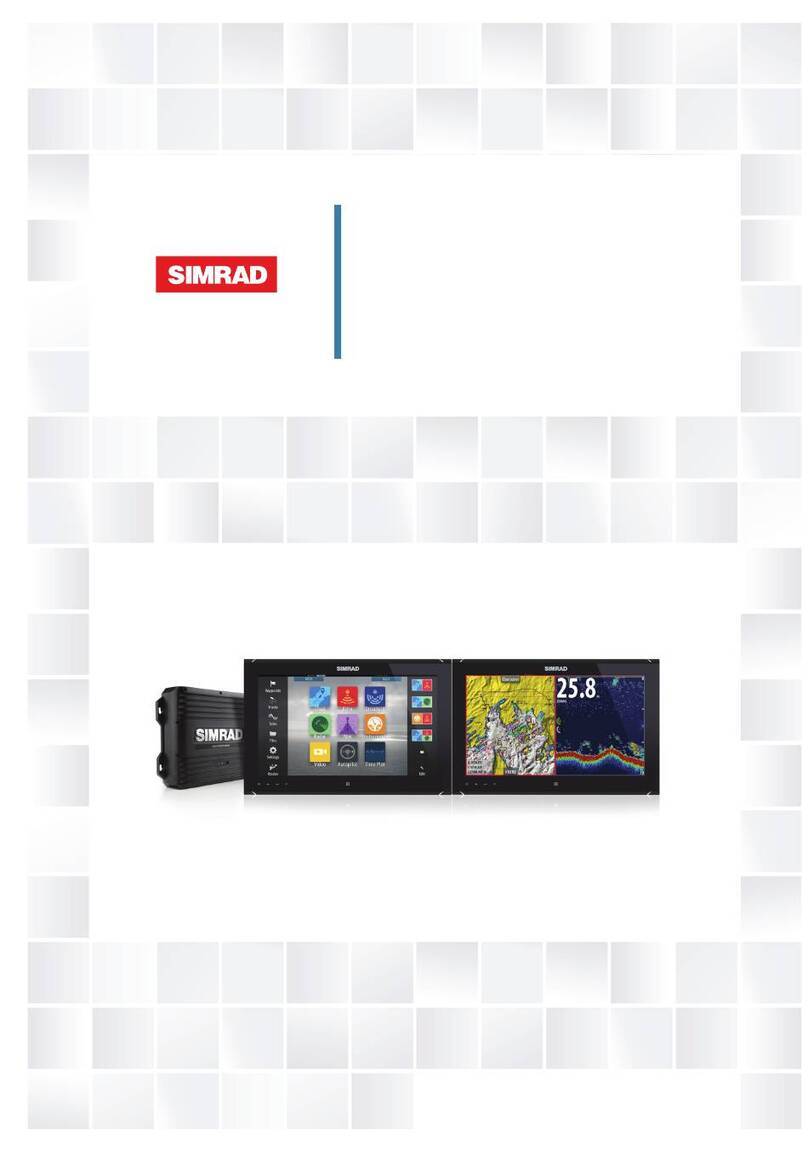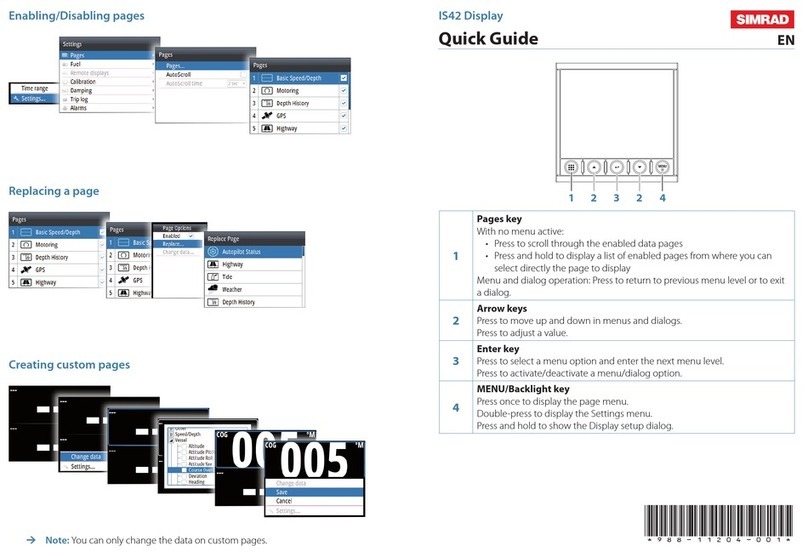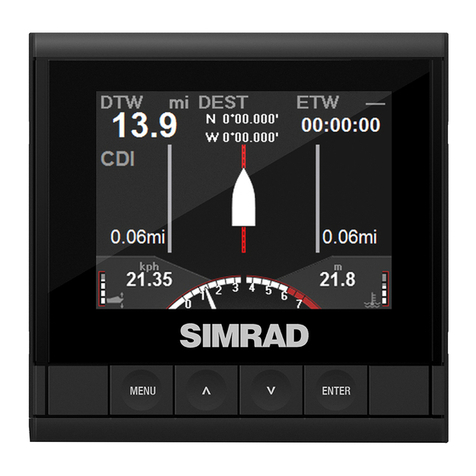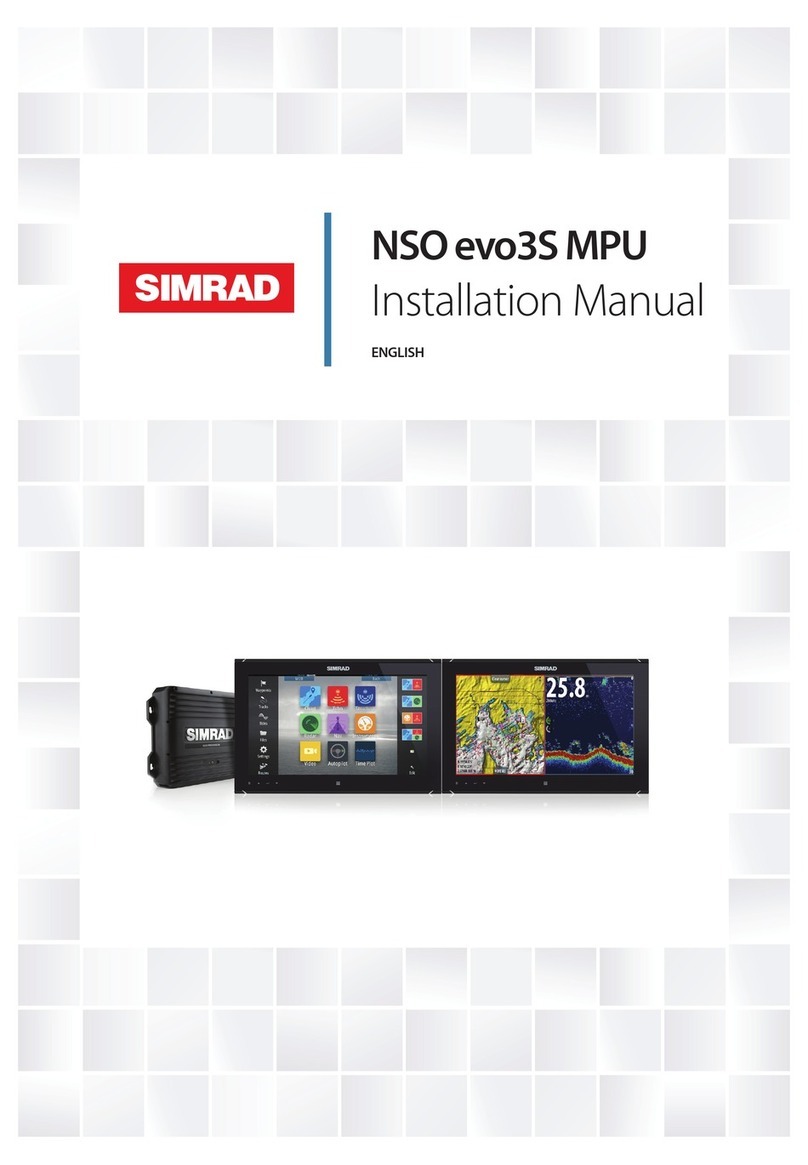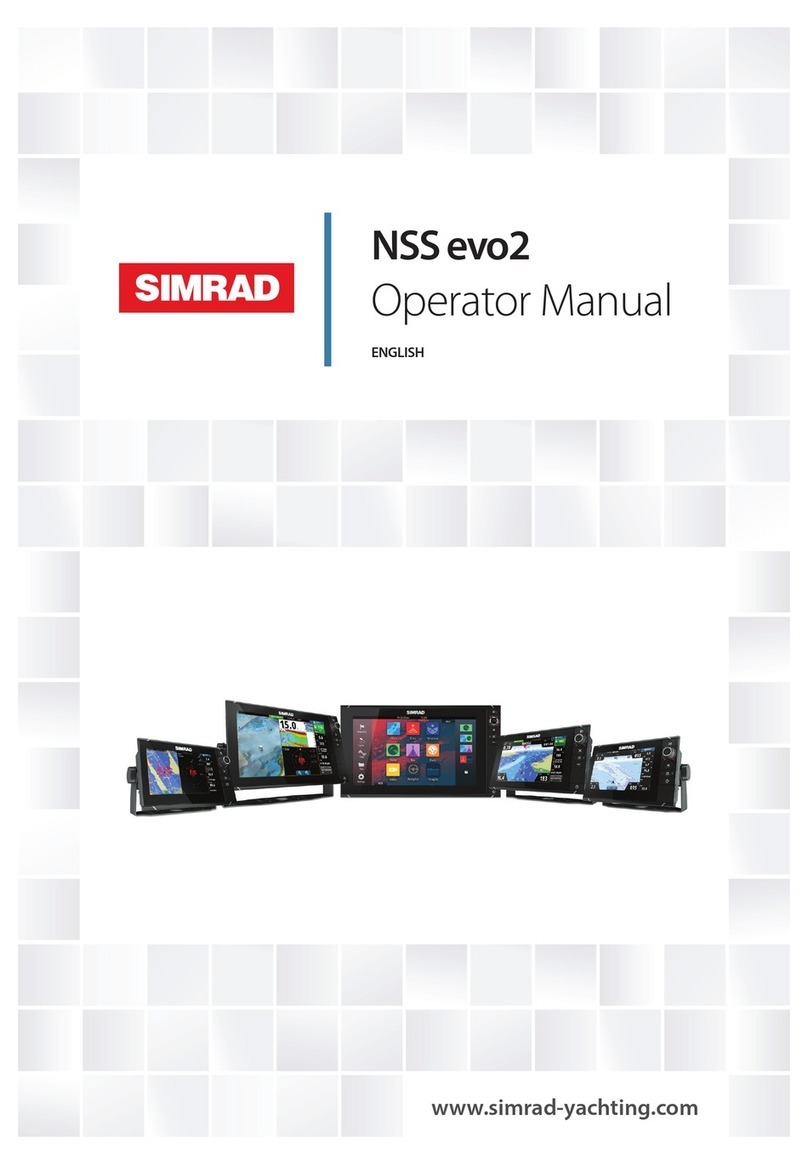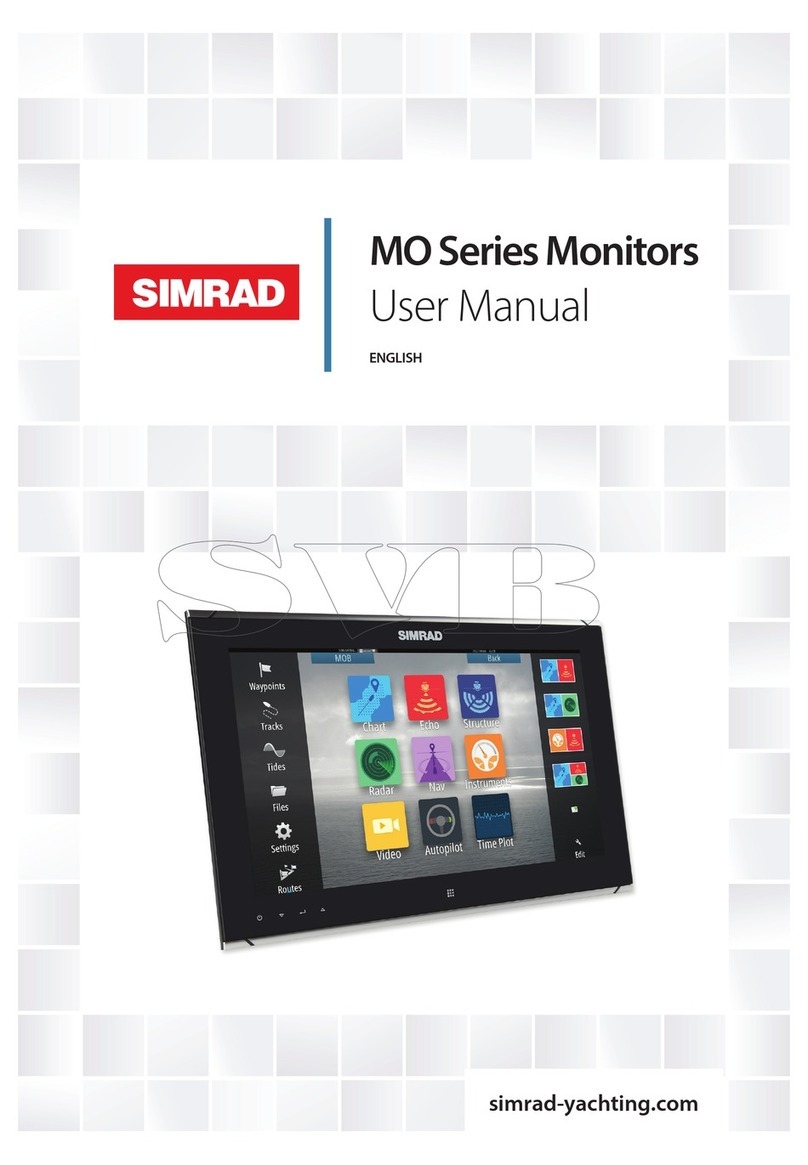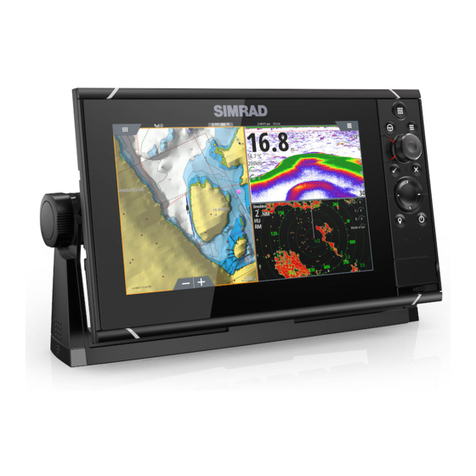
radio or television reception, which can be determined by turning the equipment off
and on, the user is encouraged to try to correct the interference by one or more of the
following measures:
•Reorient or relocate the receiving antenna
•Increase the separation between the equipment and receiver
•Connect the equipment into an outlet on a circuit different from that of the receiver is
connected
•Consult the dealer or an experienced technician for help
ISED Canada
This device complies with ISED (Innovation, Science and Economic Development) Canada’s
license-exempt RSSs. Operation is subject to the following two conditions: (1) This device
may not cause interference; and (2) This device must accept any interference, including
interference that may cause undesired operation of the device.
La traduction française de ce document est disponible sur le site Web du produit.
Australia and New Zealand
Navico declare under our sole responsibility that the product conforms with the
requirements of:
•level 2 devices of the Radiocommunications (Electromagnetic Compatibility) standard
2017
•radiocommunications (Short Range Devices) Standards 2014
Internet usage
Some features in this product use an internet connection to perform data downloads and
uploads.
Internet usage via a connected mobile/cell phone internet connection or a pay-per-MB type
internet connection may require large data usage. Your service provider may charge you
based on the amount of data you transfer. If you are unsure, contact your service provider to
confirm rates and restrictions.
Trademarks
Navico®is a registered trademark of Navico Holding AS.
Simrad®is used by license from Kongsberg.
Bluetooth®is a registered trademark of Bluetooth SIG, Inc.
C-Monster™is a trademark of JL Marine Systems, Inc.
CZone™is a trademark of Power Products LLC.
Evinrude®is a registered trademark of BRP US, Inc.
FLIR® is a registered trademark of FLIR.
HDMI®and HDMI™, the HDMI Logo, and High-Definition Multimedia Interface are trademarks
or registered trademarks of HDMI Licensing LLC in the United States and other countries.
Mercury®is a registered trademark of Mercury.
NMEA®and NMEA 2000®are registered trademarks of the National Marine Electronics
Association.
Power-Pole®is a registered trademark of JL Marine Systems, Inc.
SD™and microSD™are trademarks or registered trademarks of SD-3C, LLC in the United
States, other countries or both.
SmartCraft VesselView®is a registered trademark of Mercury.
Suzuki®is a registered trademark of Suzuki.
Yamaha®is a registered trademark of Yamaha.
4Preface | NSO evo3S Installation Manual
